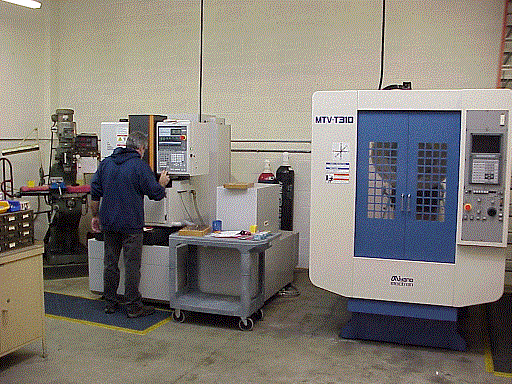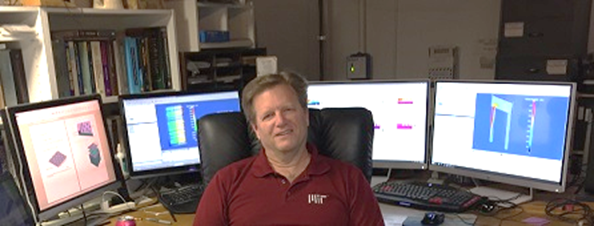
About Us

| Company Description Micro Cooling Concepts (MC2) was established in 2000. The company's mission is to serve the electronics, aerospace and laser diode industries by helping transition emerging heat transfer technologies into world-class thermal management products. The company began with a successful line of microimpingement and microchannel coolers, which are widely acknowledged as offering the best cooling efficiencies in the world. Over 50,000 coolers sold to date, MC2 is the largest domestic manufacturer of microchannel-class coolers. MC2 is managed by Jay Fryer, who has over 30 years' experience in the aerospace industry, and more than 20 years of experience in the design, manufacture, and performance characterization of microimpingement coolers. The company is located in Huntington Beach, CA. |
 Fabrication and Experimental Capabilities Fabrication and Experimental Capabilities
The facility has office space, laboratory facilities, and a machining/cooler production shop. The prototyping shop includes 3 electrical discharge machining centers, a CNC mill, a Bridgeport mill, a surface grinder, laminar flow hood, sputterer, and ovens and furnaces with operating temperatures as high as 3000oF. The laboratory is equipped to perform a variety of thermal and fluid flow experiments, including heat exchanger, cold plate, and heat pipe performance assessments, and microchannel cooler performance assessments. |
|
Tne analytic/R&D side of MC2 is led by Dr. David Underwood, who earned his PhD in Aero/Astro at MIT. The company employs an extensive suite of design and analytical tools capable of evaluating the single-phase and 2-phase thermal and fluidic resistance for rectangular microchannels, micro-impinging jets, and microchannels with finned arrays. ESI Group’s CADalyzer and ANSYS’s FLUENT computational fluid dynamics packages are used for general 3D flowfield prediction. Conduction thermal response calculations are typically performed using TAS (ANSYS) or SINDA/FLUINT (Cullimore & Ring), and general differential equation solutions are obtained using FlexPDE (PDE Solutions) and MATLAB (MathWorks). |
